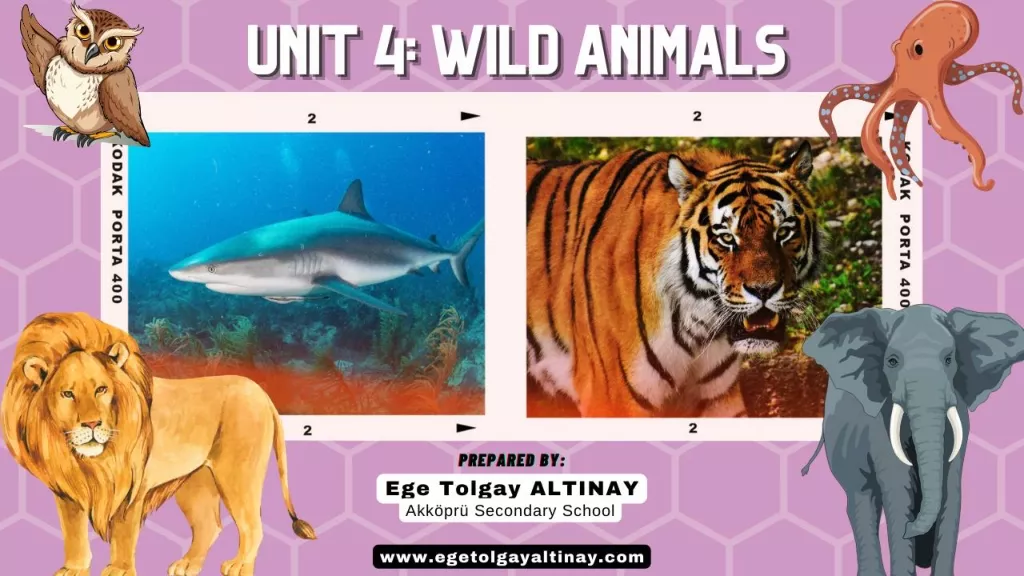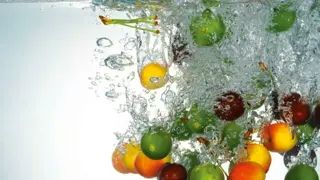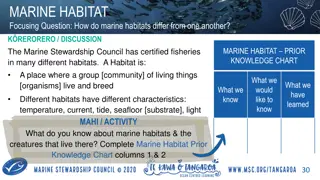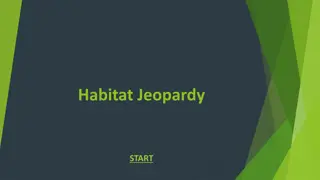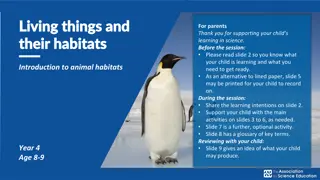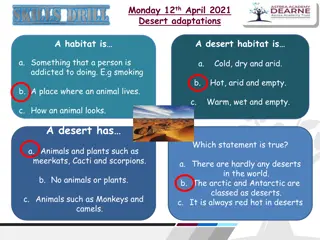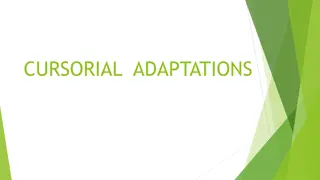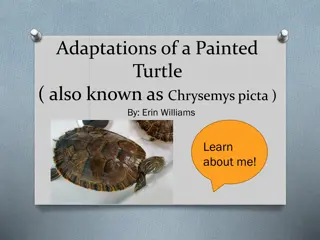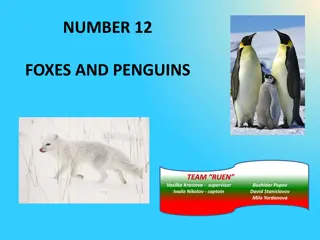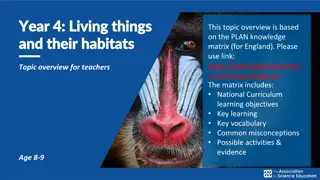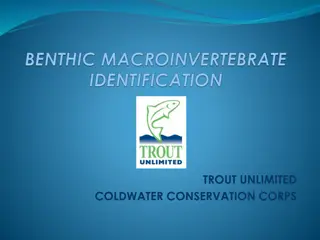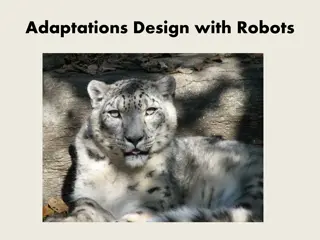Animal Adaptations in Different Habitats
Understanding animal adaptations in various habitats is crucial for appreciating how different species have evolved to thrive in specific environmental conditions. This presentation explores different habitats like woodlands, sand dunes, and rock pools, highlighting the unique features and adaptations of animals such as the polar bear and dromedary camel. By examining these adaptations, we can gain insights into how animals have specialized to survive and thrive in their natural environments.
Download Presentation

Please find below an Image/Link to download the presentation.
The content on the website is provided AS IS for your information and personal use only. It may not be sold, licensed, or shared on other websites without obtaining consent from the author.If you encounter any issues during the download, it is possible that the publisher has removed the file from their server.
You are allowed to download the files provided on this website for personal or commercial use, subject to the condition that they are used lawfully. All files are the property of their respective owners.
The content on the website is provided AS IS for your information and personal use only. It may not be sold, licensed, or shared on other websites without obtaining consent from the author.
E N D
Presentation Transcript
In Their Natural Habitats Animal Adaptations
INTRODUCTION The place where an organism lives is called a habitat Any place in which an organism lives is an example of a habitat
WOODLAND HABITAT Tree trunk Pond
WHAT ARE THE DIFFERENCES BETWEEN EACH HABITAT?
WHAT IS DIFFERENT ABOUT EACH HABITAT? Each habitat has different conditions e.g. -temperature -light -moisture
ANIMAL ADAPTATIONS Animals live most of the time in the conditions which suit them best Their bodies are better adapted to some conditions than to others This means that some animals are more likely to be found in one kind of habitat rather than another
POLAR BEAR Fur looks white to help them blend in with the snow or ice Nostrils can be closed when it is swimming underwater Large, wide paws to help it walk in the snow Thick woolly undercoat to help keep it warm
DROMEDARY CAMEL Long eyelashes and bushy eyebrows Fat-filled hump Large nostrils that can open and close Two-toed feet with thick leathery pads Leathery patches on knees
This powerpoint was kindly donated to www.worldofteaching.com http://www.worldofteaching.com is home to over a thousand powerpoints submitted by teachers. This is a completely free site and requires no registration. Please visit and I hope it will help in your teaching.


![get⚡[PDF]❤ Building Habitats on the Moon: Engineering Approaches to Lunar Settle](/thumb/21624/get-pdf-building-habitats-on-the-moon-engineering-approaches-to-lunar-settle.jpg)
